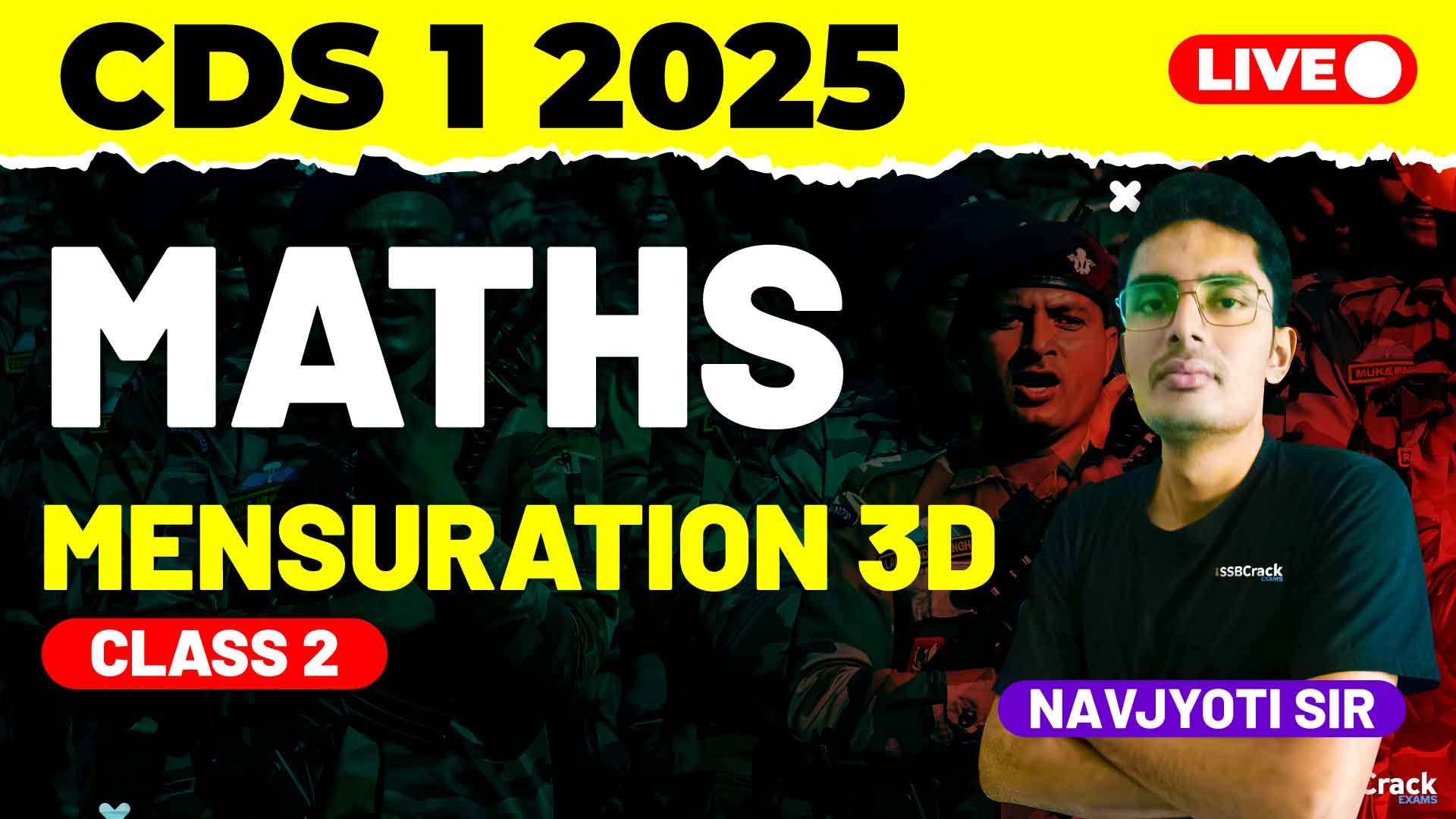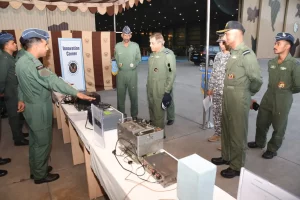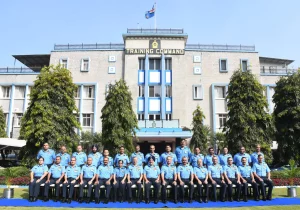Mensuration 3D is an essential topic in the Combined Defence Services (CDS) Exam, especially within the Maths section. Covering volume, surface areas, and properties of various three-dimensional shapes, this topic requires a solid understanding of geometry and spatial reasoning. The recent class on Mensuration 3D focused on specific shapes like the frustum of a cone, spheres, hemispheres, and prisms, diving into calculations for curved, lateral, and total surface areas (CSA, LSA, and TSA), as well as volumes. This blog provides an overview of these concepts and offers effective preparation strategies to tackle Mensuration 3D problems confidently in the CDS Exam.
Core Concepts Discussed in Mensuration 3D
Understanding 3D mensuration involves grasping not only the volume of objects but also how surface areas vary with different parts of each shape. Here’s a breakdown of the key shapes and concepts covered:
- Frustum of a Cone
The frustum is the result of slicing a cone parallel to its base and removing the top. The unique shape of a frustum makes it different from a complete cone, and it requires separate formulas for calculating its curved surface area, total surface area, and volume. Frustums often appear in questions related to containers and structures, where calculating capacity or surface area is needed. - Sphere and Hemisphere
Spheres are symmetrical, having a uniform radius from the center to every point on the surface, making them relatively simple in terms of calculations. Key properties include their curved surface area, total surface area, and volume. A hemisphere, or half-sphere, introduces additional complexity because it has both a curved surface (like a sphere) and a flat surface on the base. Recognizing these two parts is essential when solving for the total surface area. - Prisms
Prisms are polyhedrons with two identical, parallel faces connected by rectangular sides. The most common types are triangular, rectangular, and pentagonal prisms. For each type, calculating the lateral surface area (area of the sides) and total surface area (including the top and bottom faces) is important, especially for real-world applications like storage and construction.
Preparation Strategies for Mensuration 3D in the CDS Exam
- Understand the Geometric Properties of Each Shape
Start by getting familiar with the properties of each shape. Visualize how these shapes occupy space and observe the surfaces—flat or curved—that they contain. This conceptual understanding makes it easier to grasp the differences in lateral, curved, and total surface areas across shapes. - Build a Formula Cheat Sheet
Mensuration 3D involves a variety of formulas, and remembering them can be challenging. Prepare a concise, organized cheat sheet with formulas for volume, surface areas, and related properties for each shape. Reviewing this sheet regularly, especially as the exam approaches, will make it easier to recall formulas quickly. - Practice with Real-Life Applications
Apply these concepts to real-world scenarios. Think of a frustum as a truncated cone in a drinking cup, or a sphere as a model of a globe. Associating each shape with a tangible object can make it easier to understand and remember its properties. - Solve Previous Years’ Papers and Mock Tests
Solving past CDS exam questions and taking timed mock tests will give you a strong sense of the types of questions you might encounter. Often, CDS questions combine multiple properties or include complex word problems. Practice identifying which formula to use and breaking down problems into simpler components. - Develop Speed Through Consistent Practice
Speed and accuracy are critical for the CDS exam. Set a timer while practicing questions and work to reduce the time spent on each question without sacrificing accuracy. Regular practice will help you develop quick, efficient ways to approach each problem. - Review Unit Conversions
Be prepared for questions that require converting between units. Volume calculations may appear in cubic meters, while some questions might give measurements in centimeters or liters. Keeping conversions in mind can save time and help avoid mistakes during the exam.
Conclusion
Mensuration 3D is a dynamic and often challenging part of the CDS Maths syllabus. By focusing on the shapes and their unique characteristics—whether it’s a frustum, sphere, hemisphere, or prism—you can gain a clear understanding of the surface areas and volumes that are essential for solving related questions. Consistent practice, quick formula recall, and an understanding of unit conversions are key strategies for excelling in Mensuration 3D.
As you prepare, remember that visualizing each shape in real-life terms and breaking down complex problems can enhance your understanding and make studying this topic more manageable. With dedication and strategic practice, you’ll be well-prepared to tackle any Mensuration 3D questions on the CDS Exam confidently.



















